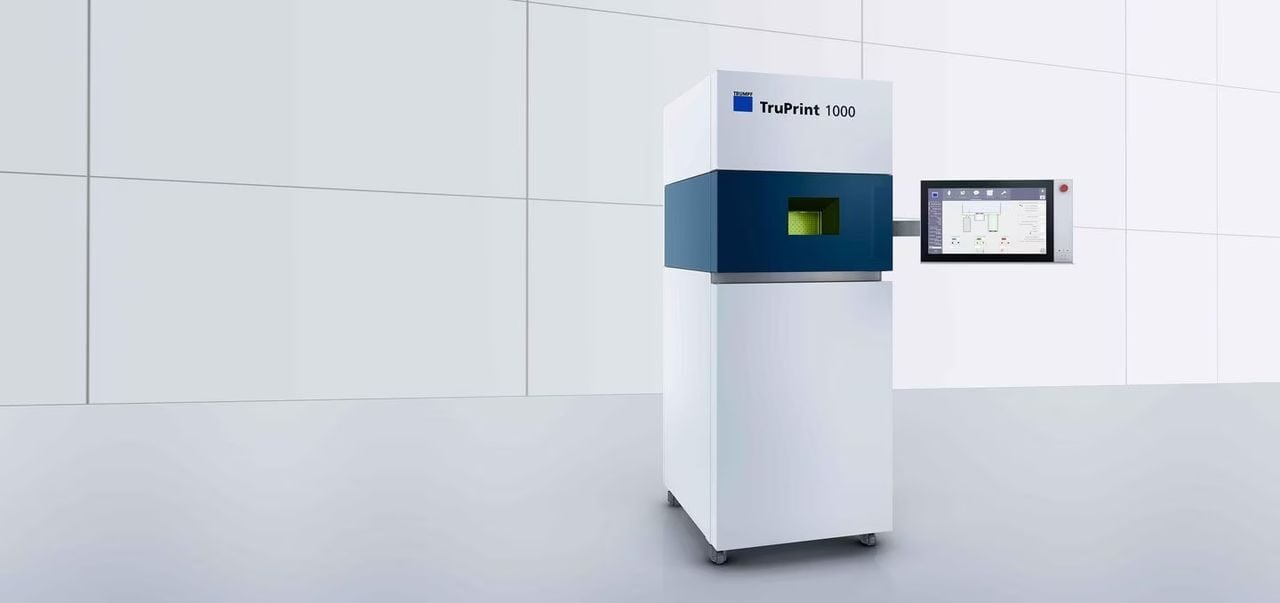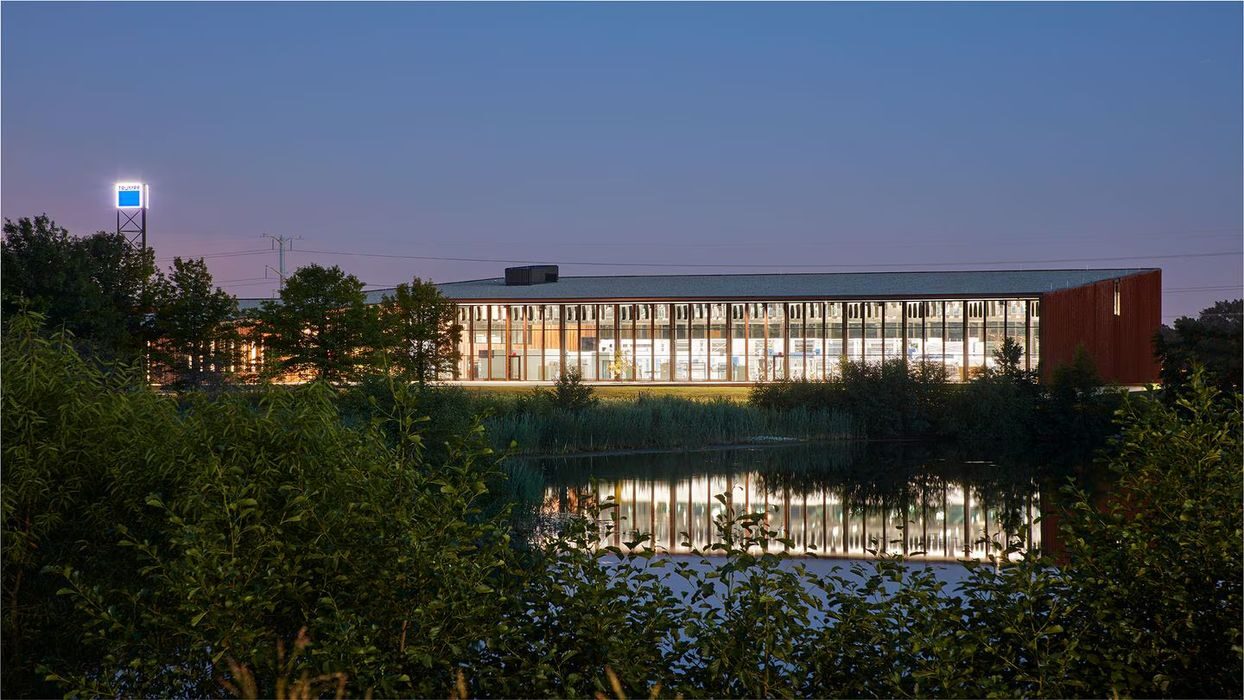
Charles R. Goulding and Preeti Sulibhavi explain that with cutting-edge 3D printers and high-powered lasers, Trumpf is quietly leading the charge toward Industry 4.0.
Trumpf, a privately held company headquartered in Germany, might not be a household name, but its influence in advanced manufacturing technologies is undeniable. With €5.365 billion in sales and 18,352 employees, Trumpf is a formidable player in the industrial sector. The company operates in four main sectors: Additive Manufacturing, High-Powered Lasers, Laser Diodes, and Financial Services. Additionally, Trumpf’s TruPrint 1000 3D Printer product line has garnered attention for its innovative approach to dental prosthetics. Furthermore, the company’s comprehensive Smart Factory offering, showcased at its state-of-the-art Chicago demonstration facility, is a testament to its commitment to Industry 4.0 solutions.
Additive Manufacturing: TruPrint 1000 3D Printer
One of Trumpf’s flagship products in the additive manufacturing sector is the TruPrint 1000 3D printer, which specializes in producing implant prosthetics. The TruPrint 1000 is capable of printing with materials like Titanium, Chrome Cobalt (CoCr), and stainless steel. This versatility is particularly valuable in the dental industry, enabling the creation of high-quality dental restorations such as hybrid bars, removable partial dentures (RPDs), crowns, bridges, and orthodontic components.
The dental industry, a significant market for 3D printing, has benefited immensely from the TruPrint 1000’s precision and material compatibility. For example, dental labs are using the machine to produce customized crowns and bridges faster and with greater accuracy than traditional methods. Moreover, the printer’s ability to handle complex geometries makes it ideal for orthodontic appliances, which often require bespoke designs.
Beyond dentistry, the TruPrint 1000 is also finding applications in medical technology and jewelry manufacturing, where intricate and personalized components are in high demand. The adaptability of this 3D printer demonstrates Trumpf’s strategic focus on niche yet high-value markets.

High-Powered Lasers Trumpf’s expertise in high-powered lasers extends well beyond additive manufacturing. The company produces laser systems used for cutting, welding, and surface treatment across various industries. One prominent example is automotive manufacturing, where Trumpf lasers facilitate precise cutting and welding of automotive components, contributing to the production of lightweight and durable vehicles.
In aerospace, Trumpf’s laser technology plays a critical role in manufacturing turbine components and high-strength structures. The precision and efficiency of Trumpf’s laser solutions not only enhance productivity but also contribute to sustainability by minimizing waste material.
Laser Diodes In the realm of laser diodes, Trumpf focuses on delivering high-performance solutions for optical communications, material processing, and even medical applications. Laser diodes are integral to devices such as barcode scanners, fiber-optic communication systems, and laser pointers.
Recently, Trumpf’s laser diodes have been employed in the semiconductor industry, where they contribute to the lithography processes that manufacture microchips. With the ongoing demand for more powerful and efficient semiconductors, Trumpf’s innovations in laser diode technology are well-positioned to support this growing sector.
Financial Services Beyond its technological innovations, Trumpf offers financial services that support its industrial customers. These services include tailored financing solutions, leasing options, and consulting services designed to help businesses integrate Trumpf equipment into their operations seamlessly.
For example, companies investing in Trumpf’s Smart Factory solutions can access financial advisory services to optimize their capital expenditure and improve return on investment. By offering financial support alongside cutting-edge machinery, Trumpf enhances its value proposition and fosters long-term customer relationships.

Smart Factory and the Chicago Demonstration Facility
A standout example of Trumpf’s forward-thinking strategy is its 50,000-square-foot Smart Factory demonstration facility in Chicago. This digitally connected hub features a control room and a broad array of machine tools for the sheet metal market, including cutting, punching, bending, and welding machines.
The Smart Factory initiative aligns with Industry 4.0 principles, emphasizing automation, digitalization, and data-driven manufacturing processes. At the Chicago facility, potential customers can witness firsthand how an integrated and automated production line can transform manufacturing efficiency and output quality.
Trumpf has strategically targeted specific vertical markets such as HVAC (Heating, Ventilation, and Air Conditioning) and the energy sector, including energy storage. The company’s equipment supports the production of critical components like ventilation shafts, cables, and capacitors, underscoring its deep understanding of these industries’ unique requirements.
One recent success story involves a partnership with an HVAC manufacturer, where Trumpf’s Smart Factory technologies helped streamline the production of ventilation components, reducing lead times and minimizing material waste.
The Research & Development Tax Credit
The now permanent Research and Development (R&D) Tax Credit is available for companies developing new or improved products, processes and/or software.
3D printing can help boost a company’s R&D Tax Credits. Wages for technical employees creating, testing and revising 3D printed prototypes are typically eligible expenses toward the R&D Tax Credit. Similarly, when used as a method of improving a process, time spent integrating 3D printing hardware and software can also be an eligible R&D expense. Lastly, when used for modeling and preproduction, the costs of filaments consumed during the development process may also be recovered.
Whether it is used for creating and testing prototypes or for final production, 3D printing is a great indicator that R&D Credit-eligible activities are taking place. Companies implementing this technology at any point should consider taking advantage of R&D Tax Credits.
Conclusion
Trumpf’s multifaceted approach—spanning advanced manufacturing technologies, laser innovations, financial services, and Smart Factory solutions—positions it as a leader in modern industrial production. The company’s significant investment in the Chicago Smart Factory underscores its commitment to serving the North American market and fostering industrial innovation.
By aligning its product offerings with industry trends and customer needs, Trumpf has crafted a recipe for success. As industries continue to adopt smarter, more automated manufacturing solutions, Trumpf’s expertise and comprehensive product lines will likely play a crucial role in shaping the future of production technologies.
